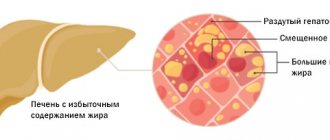One of the most exciting issues in the topic of healthy eating is the consumption of meat products. And, probably, the most common question arises about the internal organs of animals that are used as food. The liver especially stands out. “Is liver a healthy food?” We will look for the answer to this question in our article, relying only on scientific and proven facts.
Organic meats, including liver, are considered one of the most powerful superfoods. But why exactly is liver good for consumption? Liver—including beef liver, chicken liver, and cod liver—contains incredible amounts of essential nutrients. This usually surprises people since the animal's organs, including the liver, spleen, brain and kidneys, are usually discarded and not used in favor of muscle meat.
When we typically think of superfoods, we think of beautiful green leafy vegetables, colorful berries, cocoa, green tea or other plant foods. However, some animal products are also very valuable due to their rich content of nutrients, especially internal organs or offal. It is due to the extremely large amount of useful substances that offal has been consumed for centuries by generations of people in many cultures around the world.
Liver - benefits and harms for the health of men and women
The liver especially stands out among other offal products. It is believed that every gram of liver is beneficial and very valuable for health. And even though you may never have thought that liver could be as beneficial as fruits and vegetables, rest assured that liver is one of the most nutritious and dense foods on the planet, loaded with vitamin A, iron, and B vitamins. B (especially B12) and many others.
So, the answer to this question “Is liver a healthy food?” unequivocal - YES. As many studies have proven, consuming liver helps prevent anemia, supports good fertility in both men and women, promotes detoxification of the body, and much more.
Nutritional value of liver
The livers of different animals will provide different levels of micronutrients. For example, chicken liver contains the following substances per 30 grams. finished product:
Calories : 49 kcal Protein : 7 g. Fat : 2 gr. Vitamin B12 : 6 mcg (79%) Vitamin A : 4,076 IU (75%) Folate : 162 mcg (40%) Vitamin B2/riboflavin : 0.6 mg (33%) Selenium : 23 mg (33%) Vitamin B5 /pantothenic acid : 1.9 mg (19%) Iron : 3.6 mg (18%) Vitamin B3/niacin: 3.9 mg (15%) Vitamin B6 : 0.2 mg (11%) Phosphorus : 125 mg (eleven%)
Fats in the liver
If you are wondering whether liver fat is harmful, then you have nothing to worry about. Liver in general does not contain much fat compared to other animal products such as beef, butter, poultry or full-fat dairy products. One ounce (30 grams) of liver contains about 2 grams of fat.
This doesn't mean that fat from quality animal products is bad for you. Getting saturated fat from animal products, particularly liver, can be very beneficial for your health. For example, healthy fats help with neurological function, hormone production, and reproductive health. In some animal studies, the addition of chicken liver to the diet of rats has been shown to help alleviate oxidative stress and improve the serum lipid profile, despite the fact that it was a high-fat diet ().
Pork: low-calorie, so healthy?
Contents per 100g:
• Calorie content 110Kcal;
• Proteins 19g;
• Fats 4g;
• Carbohydrates 5g.
Vitamins and microelements, unlike beef liver, are not significantly different, but they differ, and which of them can be called the most useful liver depends only on what goals you pursue in nutrition:
• B vitamins;
• Vitamins A, C, E, PP;
• Potassium, fluorine, calcium and magnesium;
• Zinc, selenium phosphorus, copper;
Despite the fact that pork is one of the fattest foods, pork liver is a low-calorie product. When cooking, sufficient processing is necessary - the dish should not be raw.
In combination, microelements have a beneficial effect on the cardiovascular and reproductive systems; if present in the body, the composition of the blood improves and the body’s protective function is improved.
Health Benefits of Liver
The liver is an internal organ found in the abdominal cavity of both humans and many animals, especially all vertebrates. Beef (veal) liver, chicken liver and cod liver are the most common types of liver in many countries. Throughout history, people around the world have valued the benefits of organ meats such as liver for helping combat infertility and improve fertility rates, growth and development, maintaining high levels of energy and vitality, and mental health.
Is liver really good for you and how nutritious is it? This organ meat is not only high in iron and vitamin A, but is also one of the best sources of many B vitamins, phosphorus and magnesium. Liver is the leader among all foods in terms of vitamin B12 content. If you compare the overall nutrient density of liver to other healthy foods such as spinach, carrots or apples, liver beats them all when it comes to how many vitamins and minerals there are per calorie.
However, the key to reaping all of these liver benefits is to consume liver from a healthy animal. It is not recommended to eat any offal obtained from animals that were sick or old, poorly cared for or improperly fed. So, let's focus on the main thing. Let's highlight 9 main beneficial properties of the liver for human health.
Beef: the most optimal composition for a healthy liver?
Contents per 100g:
• Calorie content 120 – 130 Kcal;
• Protein 18g;
• Carbohydrates 5.5g;
• Fats 4g.
In addition, beef liver contains so many microelements and vitamins necessary for the quality functioning of the body that it can replace several products:
• All B vitamins and Choline help strengthen bone and muscle tissue;
• Vitamins A, C, D, PP in combination improve vision, accelerate metabolism, and are responsible for the quality of skin, hair, nails;
• Magnesium, potassium, calcium, iron, contained in large quantities, fully provide the body with the necessary volume, which regulates the level of hemoglobin. These microelements are necessary for smokers, since nicotine removes these chemical elements from the body;
• Phosphorus, zinc, selenium and copper - elements necessary for the structure of the cell, help fight aging, and compensate for dietary deficiencies.
Beef liver can be called a healthy product. This is a common option. It is preferred by the majority. It has a non-intrusive taste, and this makes it attractive when choosing. But is this the healthiest liver?
If you are trying to lose weight, 200 - 300g. per week will only be beneficial. The amount of carbohydrates in the product is minimal. If weight loss is not the goal, but maintaining it is important, dishes made from this product will be an excellent prevention of vitamin deficiency and building material for muscles.
Types of liver that can be eaten
Liver from different animals was thought to have slightly different properties, although for the most part liver from different animals provides the same nutritional benefits. Below are the different types of edible liver you can find in grocery stores, farmers' markets, specialty butcher shops, or even online:
Chicken liver
Chicken liver has the mildest taste, so it is a good choice for those who have just begun to “get acquainted” with offal. This is a type of liver that is often used to make pates and other dishes served in restaurants or prepared at home. Chicken liver has more fat, folate and iron than beef liver.
Beef and veal liver
Compared to chicken liver, beef liver contains slightly more calories, vitamin B12, vitamin B6, vitamin A, zinc and phosphorus. Many people believe that beef liver is not very tasty and appetizing compared to chicken liver, however, this is a matter of taste. You can find beef liver at some farmers' markets. And, if possible, choose calf liver, as this reduces the likelihood that you will get offal containing the hormones and antibiotics that are given to adult cows.
Fish liver (eg cod liver)
Excellent source of omega-3 fatty acids, vitamin A and vitamin D.
You can also try sheep liver, goat liver, duck liver or goose liver. For the best selection, check with your local butcher or farmer's market, who can advise you on the best liver to choose.
It is not recommended to consume pork liver due to the fact that pork by-products are often made from unhealthy animals, although pig meat or pork is a fairly healthy product. Unfortunately, pigs are typically raised in factory conditions and treated with hormones or other chemicals.
Cod liver
Composition per 100g:
• Calorie content 600 – 615 Kcal;
• Proteins 4g;
• Fats 65 – 67g;
• Carbohydrates up to 2g.
Vitamins and microelements:
• Vitamins B1, B2, B6, B9. The absence of Choline (B4) in the composition is not in favor of such a product rich in fats;
• Vitamin A, C, D. High content and high-quality compound for the absorption of each other and calcium;
• Magnesium, calcium, phosphorus, sodium, iron in sufficient quantities, when consumed 100 g. in Week.
• Omega 3 acids in combination with vitamin D make the product indispensable for people who have given up eating meat.
The benefits of cod liver are so great that many athletes turn a blind eye to the calorie content of the product. 30 – 40 gr. for breakfast will not spoil your figure, but will only improve metabolism, thanks to amino acids, the combination of which works in favor of the breakdown of accumulated reserves. This is definitely the healthiest fish liver.
How often can you eat liver?
Most experts recommend eating liver or other meats one to three times a week. You don't necessarily have to eat large amounts of this product to get all its health benefits. Even small portions of liver, about 30 to 120 grams several times a week, will provide you with a significant supply of nutrients. Doctors usually recommend consuming 100 to 200 grams of liver per week.
When you buy liver, whether at a farmer's market or in supplement form, it is important that you get it from healthy animals. Calf liver and chicken liver are two of the best options to eat. If you can't find liver at the grocery store, look at farmers' markets. There is a good chance that someone will be able to sell you good quality organ meats, including liver.
Features of nutrition for metastases in the liver
It has been scientifically proven that nutrition plays a significant role in the treatment of recovery from cancer, so a diet is often used for liver metastases.
It cannot completely replace all other manipulations and procedures, however, in combination with drug and hardware treatment, the diet for liver metastases, the menu of which is presented below, has proven its effectiveness.
Its main message is to reduce the load on the body as much as possible and supply it with all the necessary nutrients, limiting what is not beneficial. Therefore, you should focus on easily digestible protein, fiber (remembering to drink plenty of clean water so as not to cause constipation and dehydration) and vitamins.
It is important to adhere to a certain diet. You need to eat often, about 5-6 times a day, but in small portions. All dishes must be primarily boiled or stewed; baking is allowed. Fried and smoked foods should be avoided.
To quickly facilitate the body's work and quickly digest, you should chew your food thoroughly.
Can liver be taken as a dietary supplement?
For those who don't want to risk eating beef or chicken liver from the grocery store, there is a great option to use a quality liver supplement instead.
These supplements are usually sold in powder or tablet form in health food stores or online. A high-quality liver supplement in its purest, most natural form, it basically works as a B-complex multivitamin, in tablet form. This would be a great solution for those struggling with anemia, low energy and vitality, fatigue, thyroid problems, autoimmune disease, poor cellular function and even cancer.
However, it is still recommended to eat real liver if you tolerate organ meats well.
Beef liver for weight loss
1. The by-product is rich in its chemical composition and low in calories, so it is recommended to be consumed during weight loss and weight maintenance.
2. By following a liver-based diet, you can lose up to 7 kg. in one month, and you will not experience hunger, problems with anemia and bone fragility.
Note! People aged 60+ are not recommended to regularly consume beef liver, much less adhere to such a diet.
The liver contains a high content of keratin, an excess of which can cause health problems in an elderly person. And in case of atherosclerosis, it is better to refuse the liver altogether!
During pregnancy
Some historical facts about liver consumption
According to the Weston A. Price Foundation, “Virtually every cuisine in the world has liver dishes. In some cultures, liver is so highly valued that even human hands are forbidden to touch it... For most of recorded time, people preferred liver to muscle meat, considering it a source of great strength and magical healing abilities" ().
In his book Nutrition and Degenerative Diseases, Dr. Price traveled the world to study traditional diets in 14 different populations. He found that almost every group included meat in their diet in one form or another, as it helped them avoid disease and reproduce successfully.
In Traditional Chinese Medicine, liver has long been considered a nutritional energy source. It is believed that eating meat products helps replenish depleted nutrient reserves and support the functions of internal organs (). For many centuries, liver was consumed by hunter-gatherers, such as those living in parts of Africa, who hunted primarily animals such as elk and deer. Liver was a valuable source of protein and nutrients when food was scarce, including in colder climates when plant foods were difficult to grow.
In medieval Europe, liver was a popular ingredient, used as a filling for pastries, sausages, and even meat puddings. In Asia, liver has a long history of use in broths and stews. In Japan, liver has always been considered an important food for pregnant women. Today, liver is still frequently consumed in France, Argentina, India, Spain, Russia, parts of Scandinavia and parts of the Middle East. For example, liver and onions are still a popular dish in Latin America, such as Spain and Portugal.
LIVER: CLEAN OR LOVE?
10 different functions
We are accustomed to thinking that the liver is, first of all, an organ of the digestive system that filters nutrients coming from the stomach and intestines. In fact, it performs about 10 very diverse functions, each of which is very important. For example, it synthesizes substances responsible for blood clotting. Therefore, liver failure is always accompanied by excessive blood thinning, as well as spontaneous formation of blood clots. It produces many proteins, which is why a pronounced deterioration in its functioning is always accompanied by a violation of osmotic pressure and edema, as well as a decrease in immune defense. Excess bilirubin turns the skin yellow and literally “hits the brain,” causing encephalopathy such as “delirium tremens.” Without the liver, the production of many vitamins and hormones is impossible. In general, no matter what system you touch on, the liver appears everywhere to one degree or another. This means it is important to keep her healthy for as long as possible.
Fatty hepatosis is a disease of civilization
While many are afraid of contracting viral hepatitis or developing cirrhosis, the most common liver disease is its fatty degeneration, fatty or steatohepatosis. The availability of fast food, processed foods and animal fats in general has led to their uncontrolled consumption. Alcohol also makes its contribution, as a result, liver cells are gradually replaced by fat cells. This is especially pronounced in overweight people, where the liver involuntarily becomes the next fat storage area (after the fatty apron on the abdomen, buttocks and thighs). But with poor nutrition, this problem also affects slim people. As a result, liver function gradually decreases, immunity suffers, and digestive problems begin. And not immediately, because according to the observations of scientists, symptoms appear only when only 15% of the organ remains in working condition. To avoid this, you need to regularly take a biochemical blood test for liver enzymes and undergo an ultrasound of this important organ.
Tell the whole truth, biochemistry
The main liver parameters are ALT and AST. These enzymes are found inside liver cells (hepatocytes); Normally, their amount in the blood is minimal. If cells are destroyed, enzymes enter the blood and their levels increase. First of all, this occurs with severe fatty hepatosis, hepatitis, cirrhosis, and liver cancer. An increase in ALT and AST is also possible during myocardial infarction. To distinguish one from the other, there is the Ritis coefficient - the ratio of AST to ALT. Normally it ranges from 1.0 to 1.7. If the value is less, it means problems with the liver, if more, it means problems with the heart.
Gamma-GTP is, as doctors joke, the most alcoholic indicator. The marker increases due to obstruction of bile outflow during toxic and alcoholic hepatitis.
ALP (alkaline phosphatase) - increases in alcoholic hepatitis, but can also be a marker of cancer, for example, lymphoma and lymphogranulomatosis. If a person does not abuse alcohol, but alkaline phosphatase is elevated, it is worth considering an in-depth examination of the body.
ChE (cholinesterase) - with liver pathology does not increase, but, on the contrary, decreases. If the previous four enzymes are elevated and cholinesterase is decreased, serious liver problems are evident. To complete the picture, in addition to enzyme tests, information about the pigment bilirubin is needed. This hemoglobin derivative is processed in the liver, enters the bile and, if the outflow of the latter is impaired, it is absorbed into the blood. It is bilirubin that colors the skin during jaundice. If we are not talking about acute hepatitis, an increase in total and direct bilirubin is always a sign of fairly serious liver damage. If the increase is indirect, then the liver has nothing to do with it, red blood cells are being destroyed in the blood as a result of hemolysis.
Alcohol and iron
Alcoholic hepatitis is considered one of the main causes of cirrhosis. On average, alcoholic cirrhosis develops in patients aged 40–45 years, sometimes earlier. Different genetic backgrounds contribute to the acceleration of the development of cirrhosis in the same population. And here we are talking about two different genetic mechanisms. On the one hand, the genetically determined high activity of ethanol-splitting enzymes: alcohol dehydrogenase and aldehyde dehydrogenase seems to be a plus. A person can drink a fairly large amount of alcohol, which quickly breaks down in his blood due to the work of these enzymes, but at the same time a large amount of acetaldehyde is released, which has a pronounced toxic effect on the liver. On the other hand, we are talking about a very underestimated disease - hereditary hemochromatosis. In this case, iron is actively deposited in organs and tissues, primarily in the liver. Most early cirrhosis is associated with a dominant form of the disease, cirrhosis in middle age (about 40-45 years), when you seem to drink “like everyone else,” everyone is healthy, and you have cirrhosis of the liver, are caused by an erased form of the disease, when only part of the genes is active, responsible for improper iron utilization. Today, molecular genetic diagnostics are becoming increasingly widespread, in which various forms of hereditary hemochromatosis can be identified. In fact, it is better for these people to completely abstain from alcohol in their lives. And undergoing such an analysis in your youth means protecting yourself from unnecessary risks.
How much can you drink?
Is there a safe dose of alcohol? The World Health Organization believes that chronic alcohol intoxication occurs when alcohol is consumed in a toxic dose (on average more than 64 g in terms of conditional absolute ethanol) and more than once a week. That is, for alcohol to be absolutely safe for the liver, you can drink no more than 150 grams of strong alcohol (vodka, whiskey, cognac), half a liter of unfortified wine or a little more than a liter of beer per week. It must be remembered that there are no safe doses of alcohol, since it is a psychoactive substance. Regular alcohol consumption is associated with an increased risk of accidents and injuries, especially in the elderly.
Should you be cleaned?
Cleansing the liver using various substances (herbs, infusions, dietary supplements) is the most popular alternative healing method. Sometimes it often brings a visible result - it’s hard not to believe the next healer when you see with your own eyes the green-black conglomerates coming off naturally after such a procedure. Fortunately, the liver is not contaminated. This is not a car filter made by man, where soot and soot settle on the walls; man’s creation is many times more perfect, and living tissue has a unique ability to process and remove any foreign substances from its structure. And there is physically nowhere for dirt to be found. The only possible “clogging” is the formation of stones in the gall bladder or hepatic bile ducts. And this introduces additional danger into the cleaning process. Which, in fact, always represents taking a loading dose of a choleretic drug. As a result, the liver strains all its strength, produces an inadequate amount of bile, which the body does not need in such quantities, it is difficult to process in the intestines and goes into the toilet in the form of bizarre green and black “stalactites.” If there were stones in the bile ducts, such flushing of the system can lead to life-threatening consequences - blockage of the duct, development of hypertension in the bile ducts, biliary hepatitis, jaundice. Surgeons regularly receive emergency calls to unfortunate people who decide to cleanse the liver, but end up with hepatic colic and emergency surgery. Gastroenterologists advise that the best way to cleanse the liver is to give it rest. This organ is unique in its ability to self-heal. Give up foods and alcohol that are harmful to the liver for several months, eat a balanced and healthy diet, give yourself moderate physical activity and lose excess weight - this will be the most effective and safe cleansing method.
Tender killers
But the second place after fatty hepatosis in terms of prevalence, and the first place in danger, is occupied by viral hepatitis. Relatively recently, only three of them were known: A, B and not-A-not-B (this is how the other unknowns were funny called, the most common of which was C). Today the list has expanded to almost ten: A, B, C, D, E, TTV and others. Virologists are confident that the Latin alphabet will soon not be enough to identify all viruses. The route of infection can be the most unexpected (from a visit to the dentist to a manicure done in a salon), and the course of the disease can be the most insidious, without any symptoms: maximum weakness, fatigue, bad mood. If hepatitis B often occurs in an acute form and less often becomes chronic, then C is traditionally called the “gentle killer” - in 80% of cases it becomes chronic and imperceptibly destroys the liver, manifesting itself when something irreparable has already occurred: cirrhosis of the liver has formed or a malignant tumor has formed ( hepatocellular cancer). Fortunately, today it is possible to avoid both ailments. Hepatitis B is still difficult to treat, but it is excellent for prevention. The hepatitis B vaccine has been used for more than 20 years and is included in the vaccination schedule in our country. After 3 injections, a high concentration of specific antibodies from hepatitis B is determined in the blood, which persists for about 10 years. It is after this period of time that revaccination is required. Considering the extremely high contagiousness of hepatitis B (it is transmitted not only through blood, but also sexually, through shared household objects, even through kissing, if both have defects in the oral mucosa), vaccination is recommended for absolutely everyone, especially since the B vaccination automatically protects and from hepatitis D. The variability of the hepatitis C virus has not yet made it possible to develop a vaccine, but in recent years a new generation of drugs has been introduced that makes it possible to completely get rid of the virus in 90% of cases.
In order not to miss a possible infection with viral hepatitis, once a year you need to be tested for markers of viral hepatitis B and C (HBsAg and HCV).
Liver and medications
Another known enemy of the liver is drugs. Almost every pill you take affects the liver to one degree or another. The problem of drug-induced hepatitis became especially urgent when in our country almost all medicines became possible to purchase without a prescription. The first place in hepatotoxicity is firmly held by painkillers and anti-inflammatory drugs. Alas, the number of those who take a “head pill” every day is too large. The second one is antibiotics. The third is divided into anti-tuberculosis and anti-tumor drugs, and the fourth is divided into herbal medicines. Alas, despite the myth about their harmlessness, these are the same chemical substances, often with an inconsistent dosage of active substances. Over 10 years, the number of acute liver injuries from herbal medicines and dietary supplements in our country has increased by 20%, and in South Korea, which is traditionally prone to naturopathy, herbal medicines account for 72% of all cases of drug-induced liver damage. The main rules of conduct are to avoid unnecessary, excessive intake of medications, both classical and natural, take them strictly as prescribed by the doctor, and be sure to check liver function after completing long-term drug treatment.
Transfer station
If liver function is seriously reduced and liver failure develops, there is still a chance to live a full life. For some time, liver function can be maintained with the help of regular detoxification sessions on the MARS device (similar to hemodialysis sessions for kidney failure), but today there are few such devices in the country. But liver transplants are carried out: both from a deceased donor and from a tissue-compatible relative. Yes, yes, you can donate part of your liver to your loved one - such a transplant is called related and is most often carried out from a mother to her sick child. The amazing ability for self-healing will lead to the mother's liver being almost completely restored, and the child will receive a functioning organ for life. A transplant from a donor is carried out according to the standard procedure: the recipient is subjected to histocompatibility tests (more than 20) and is placed on a waiting list. The cadaveric liver must be transplanted within 6 hours, so those on the waiting list should not leave the city under any circumstances. The first successful liver transplant was performed in the United States in the early 60s; today, 40% of transplant recipients live 20 years or more. New prospects are opened by the development of biological printers and experiments taking place in laboratories around the world to create artificial organs.
The first successful liver transplant was performed in the United States in the early 60s; today, 40% of transplant recipients live 20 years or more.
HEALTH FINDINGS:
-A diseased liver does not hurt, this happens most often. Problems appear when 15% of its cells remain in working condition.
-Therefore, it is important to monitor the liver: once a year, take blood tests for “liver” markers and viral hepatitis, as well as undergo an ultrasound.
-The most common liver problem is fatty hepatosis, as well as the most dangerous one, cirrhosis, which develops due to the abuse of junk food and alcohol. People with iron metabolism disorders are more prone than others. It will be useful for anyone who is not used to denying themselves pleasures to take a molecular genetic test for latent hemochromatosis.
-There is a real epidemic of viral hepatitis in the world. A vaccine is guaranteed to protect against hepatitis B, and hepatitis C, fortunately, can be treated well with new drugs.
“Cleansing” the liver is not only useless, but also dangerous. The best way to recover is to give up unhealthy foods and alcohol for several months.
-Medicines are another enemy of the liver.
Do not abuse pills without indications, do not allow uncontrolled use of painkillers and antibiotics. Published: January 20, 2021
Potential Liver Health Harm
Liver is a very healthy food for most people. However, there are both pros and cons of consuming liver that you need to be aware of.
- If you have high levels of iron or copper in your blood, you may need to limit your intake of liver and other meat products.
- If you are taking high doses of vitamin A in supplement form, be careful about consuming liver as it could potentially raise your vitamin A levels to excessively high amounts. Very high intakes of vitamin A can potentially be toxic and harmful and should be avoided, especially during pregnancy or childhood.
- When it comes to eating raw liver, do so only if you are confident that the product is fresh and comes from a healthy animal that has been raised in good conditions. Health authorities in many countries advise against eating raw liver due to the risk of bacterial contamination, although documented evidence suggests the risk is lower if you buy fresh, quality organ meats (). Freezing and cooking the liver helps reduce the risk of bacterial infection.
Liver is generally safe for children starting around 8-9 months. Keep in mind that only a small portion of organ meats is required for children, and more is not always better.
How to select and store beef liver
1. Choose only chilled offal, not frozen. This makes it easier to determine the quality and freshness of the liver externally.
2. If you are buying a product from the market, then it is best to check the certificates.
3. A good offal has a homogeneous composition, a porous structure, the surface film fits tightly to the liver itself, but is easily separated. Does not have a gray coating or weathering.
4. The color is burgundy or dark brown. If the product is very dark in color, this indicates that the liver is from an old animal. A young calf has a liver the color of a ripe cherry. Choose a liver weighing up to 2 kg, then it will be an offal from a young calf.
5. Beef liver has a milky and specific smell, but it shouldn't put you off. There should be no foreign odors or aromas of various spices.
6. There should be no damage or growths, the surface should be shiny and damp in appearance. It has no blood clots, no blood vessels, and is not sticky.
7. The cooled product can be stored in the refrigerator for a day, or in vacuum packaging for two days. Store frozen offal in the freezer for up to three months.
On a note! It is not recommended to freeze beef liver twice; it loses all its beneficial properties.
Contraindications to liver resection
In addition to the Child-Pugh criterion, other factors are taken into account when assessing the possibility of surgical treatment.
Contraindications to the operation:
- Damage to more than 80% of the organ volume. A surgical operation in such large volumes, with such significant excision of tissue, does not leave the possibility of liver restoration. This means liver failure and death of the patient.
- The presence of metastases in distant organs and lymph nodes. Liver cancer, as a rule, is secondary in nature, that is, it is itself a metastasis. If it is hepatocellular carcinoma, that is, a primary tumor, it can metastasize to the spine, brain, kidneys, and heart. In this case, surgery will no longer help. In inoperable cases of liver cancer, the international clinic Medica24 provides comprehensive palliative therapy. This allows you to relieve symptoms (including pain), maintain quality of life and prolong it as much as possible.
- Cirrhosis of the liver. Cirrhosis is a serious disease in which the liver tissue is replaced by connective tissue. As a result, the liver cannot function fully. Resection of a part of the organ in this situation leaves no hope of restoring its normal functioning.
- General serious condition. Liver resection is a complex operation and represents a serious test for the body.
- Tumor growth into the portal vein. Removing the tumor in this case will inevitably lead to extensive bleeding and danger to life.










